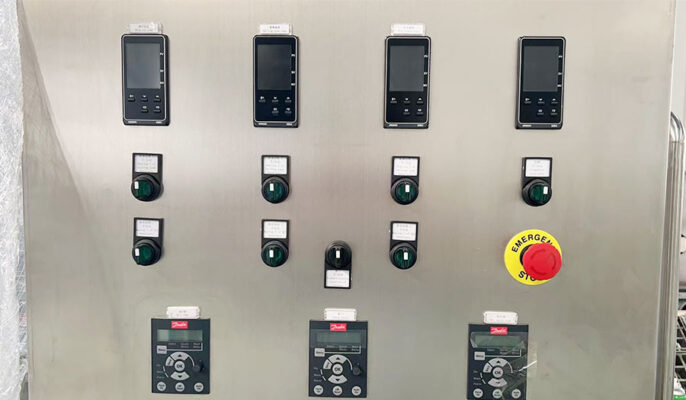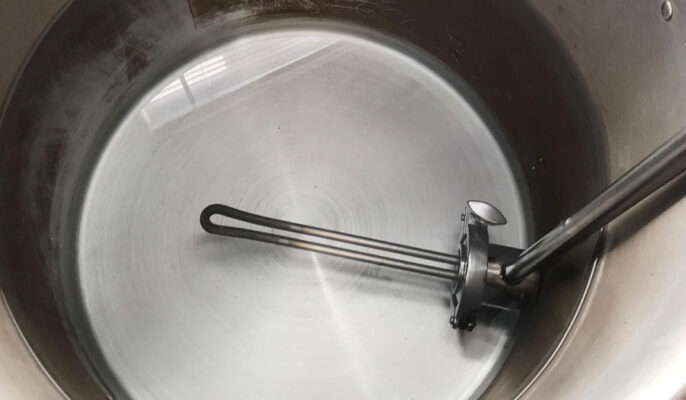In beer brewing, controlling fermentation is one of the key steps to ensure the quality of beer. During the fermentation process, yeast converts sugar into alcohol and carbon dioxide gas to produce the unique enthusiasm of beer. The temperature of the fermentation process will affect the flavor and aroma of the final product. The speed of fermentation depends on a variety of factors, including the type of yeast used, the amount of sugar, and the temperature. Some brewers prefer to ferment beer at low temperatures to preserve its delicate flavor, while others choose to ferment at higher temperatures to produce a faster and more robust fermentation.
Why is fermentation temperature control important?
Maintaining the correct fermentation temperature is critical for the following reasons. First, yeast activity is highly dependent on temperature, and different yeast strains have specific temperature ranges for optimal performance. Controlling temperature allows brewers to create an environment that promotes the desired yeast metabolism and flavor production. In addition, too high a temperature can lead to off-flavors, while low temperatures can slow or even stop fermentation, resulting in under-fermented beer.
- Affecting yeast activity and products: Yeast exhibits different activities at different temperatures. Fermentation temperatures that are too low may cause yeast activity to slow, prolong fermentation time, and affect beer yield and quality. Fermentation temperatures that are too high may cause yeast to produce undesirable byproducts, such as bad flavors and odors.
- Control the flavor and aroma of beer: Different beer types need to be fermented within a specific temperature range to produce specific flavors and aromas. For example, lager is usually fermented at a lower temperature, which helps produce a refreshing and clean taste, while ale is fermented at a higher temperature, which may produce more fruity and complex aromas.
- Control the fermentation speed and time: The right fermentation temperature can ensure that the fermentation speed is moderate and avoid fermentation that is too fast or too slow. Too fast fermentation may lead to insufficient flavor development, while too slow fermentation will increase production costs and time costs.
- Avoid adverse reactions and contamination: Fermentation at a suitable temperature can reduce the risk of adverse chemical reactions and microbial contamination, and help keep the beer clean and stable.

What happens if the fermentation temperature is turned up or down?
Higher Fermentation Temperatures
Fermenting beer at too high a temperature can cause the yeast to become overactive. When this happens, the yeast produces a range of products that are not good for the final beer. These include fusel alcohols, which give the beer an “alcoholic” taste. Higher fermentation temperatures also increase the esters produced by the yeast. Esters are another product that is considered characteristic of yeast; they have flavors as varied as cloves, bananas, and spices.
Generally speaking, “neutral” yeast strains fermented at too high a temperature produce less palatable esters, so fermenting at a consistent ideal temperature will result in a better final product. Some more niche strains, such as those used to produce wheat beers, Belgian styles, and farmhouse beers, produce the esters that are desirable for these specific styles even when fermented warm. In these cases, fermentation in a warmer environment can be used to produce more yeast character in the final product.
Fermentation Temperatures Too Low
If the fermentation temperature is too low for a particular yeast, the yeast’s metabolism slows down and its activity decreases. This often results in a beer that is not active enough to complete the fermentation. This can cause the yeast to “stagnate,” leaving the beer only half-fermented and giving the final product a sweet taste. This isn’t the worst if you’re kegging your beer, but it can be a safety hazard if you’re bottling your beer. Since there’s residual fermentable sugar in the solution, the yeast may consume it as the temperature rises. If this happens in the bottle, and extra priming sugar is added, there’s a risk of the bottle exploding or the beer overcarbonating.
How to control temperature during fermentation?
Heating equipment
In colder climates or certain beer types that require high temperatures, brewers may need to employ heating methods during fermentation. Electric heating elements, steam jackets, or hot water jackets are often used to increase the temperature of the fermentation vessel. By maintaining the desired temperature range, brewers can ensure optimal yeast activity and achieve the desired flavor profile. Heating equipment can provide the right temperature environment as needed to ensure that the yeast is active and growing within the right temperature range.
Cooling systems
Brewers utilize a variety of cooling systems to control fermentation temperature. The most common method is to use a glycol cooling system, which circulates cooled glycol through a cooling jacket or coil in the fermentation vessel. This allows for precise temperature control by regulating the glycol temperature. Another cooling option is a heat exchanger, which uses a coolant, such as cold water or refrigerant, to cool the fermentation vessel. These devices effectively control fermentation temperature by passing the coolant through the outer walls of the fermenter or internal cooling coils.
Temperature probes and control systems
To ensure precise temperature control, brewers rely on temperature monitoring devices, such as thermometers, thermocouples, or temperature probes. Temperature probes are used during fermentation to monitor temperature changes within the fermenter in real-time. These probes can be connected to a temperature control system, such as a PID controller or intelligent control system.
The temperature control system can automatically adjust cooling or heating equipment according to a preset temperature range to maintain the fermentation temperature at an ideal level. In addition, the winemaker monitors the temperature throughout the fermentation process and may make gradual adjustments as needed, such as raising the temperature for diacetyl rest or lowering the temperature for cold crash.
Fermentation box or fermentation chamber
A fermentation box or fermentation chamber is a device specially designed to control the fermentation temperature. They usually have a temperature control system and insulation to accurately adjust and maintain the temperature inside the fermentation barrel or fermentation tank.
The fermentation box can ensure temperature stability during the fermentation process by setting the desired temperature. This method is suitable for large-scale production and winemaking operations that require precise control.
Environmental condition control
In the absence of specialized equipment, the fermentation temperature can be controlled by adjusting the environmental conditions where the fermentation tank is placed. For example, the fermentation tank can be placed in a constant temperature room or in a basement to avoid direct sunlight and temperature fluctuations.

Fermentation Temperature Tips
Raising Fermentation Temperature
- Wrap the fermenter in something like a sleeping bag or insulated blanket. Wrapping the fermenter locks in the heat generated by the yeast fermentation, causing the temperature to rise.
- Place the fermenter in a cardboard box or insulated room for a similar effect.
- Another way to control the temperature is to submerge the fermenter in a bucket of water and use an aquarium-style heater to maintain the temperature.
Lowering Fermentation Temperature
- The simplest method is to wrap the fermenter in a damp towel. As the water evaporates, the outside of the fermenter cools.
- If this doesn’t work, you can place the fermenter in about 1-2 inches of water and wrap the fermenter in a damp towel, making sure the towel is touching the water. This provides a constant supply of moisture for evaporation.
- You can also add ice cubes to the water or turn on a fan to cool the water further. You can also submerge the carafe in a bucket of water and use an ice pack to lower the temperature. You will need to replace the ice pack regularly to maintain a consistent temperature.
What do I do when my beer is done fermenting?
It is recommended to let the beer sit for a few days after fermentation. This will allow the beer to settle, the yeast to flocculate at the bottom of the fermenter, and the beer will become clear. If you can lower the temperature slightly, we recommend doing so as this will help to clarify the beer.
Once fermentation is complete, you can choose to package it immediately, age it for a longer period, or add other ingredients such as fruit, oak, or on its own in some lagers. It all depends on the beer you are brewing.
Conclusion
Temperature control is a critical factor in successful fermentation and plays an important role in achieving the desired beer flavor and characteristics. By utilizing a cooling system or a heat source, brewers can maintain precise and consistent fermentation temperatures. Understanding the specific temperature requirements of different yeast strains and beer types is essential for brewers to produce high-quality, flavorful beers. Monitoring fermentation temperatures and adjusting them when necessary allows brewers to maintain yeast health, avoid off-flavors, and produce superior-quality beer.




